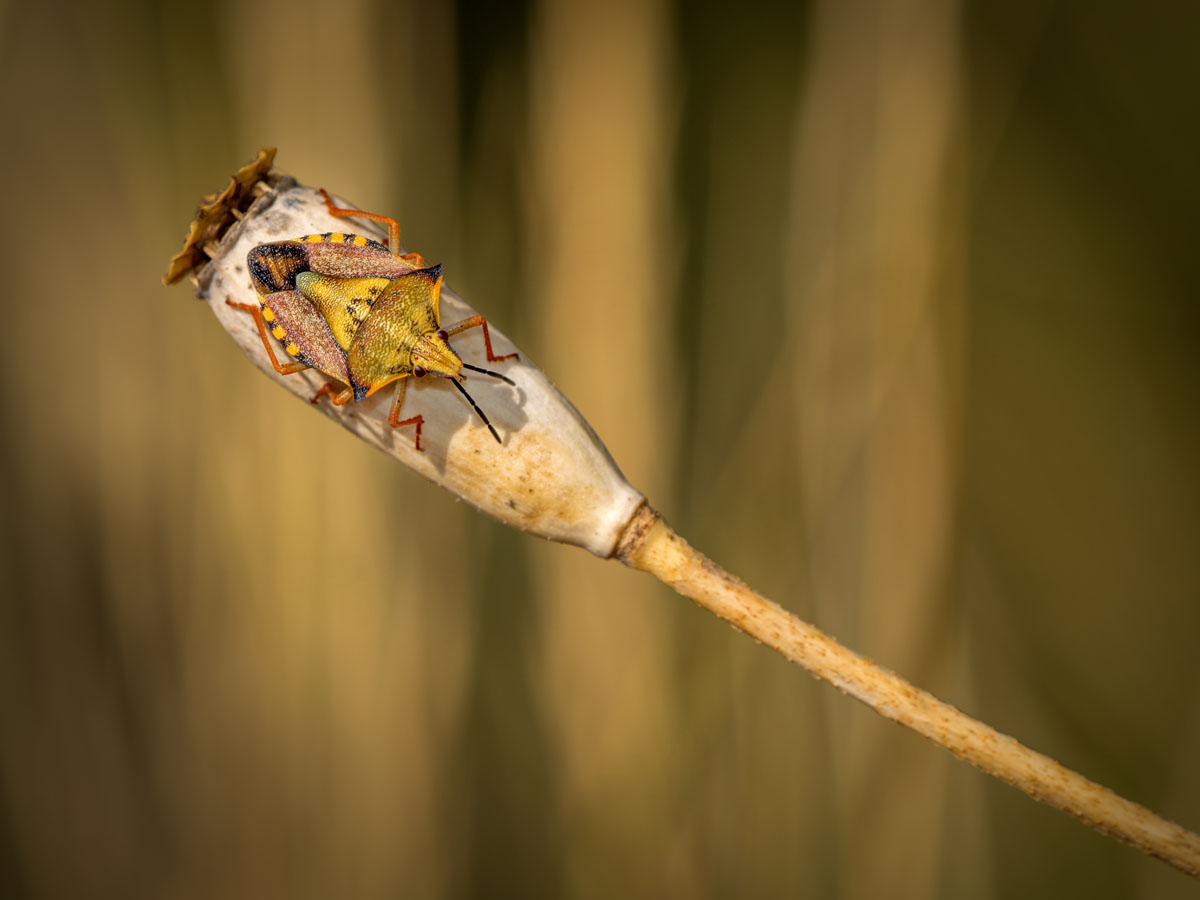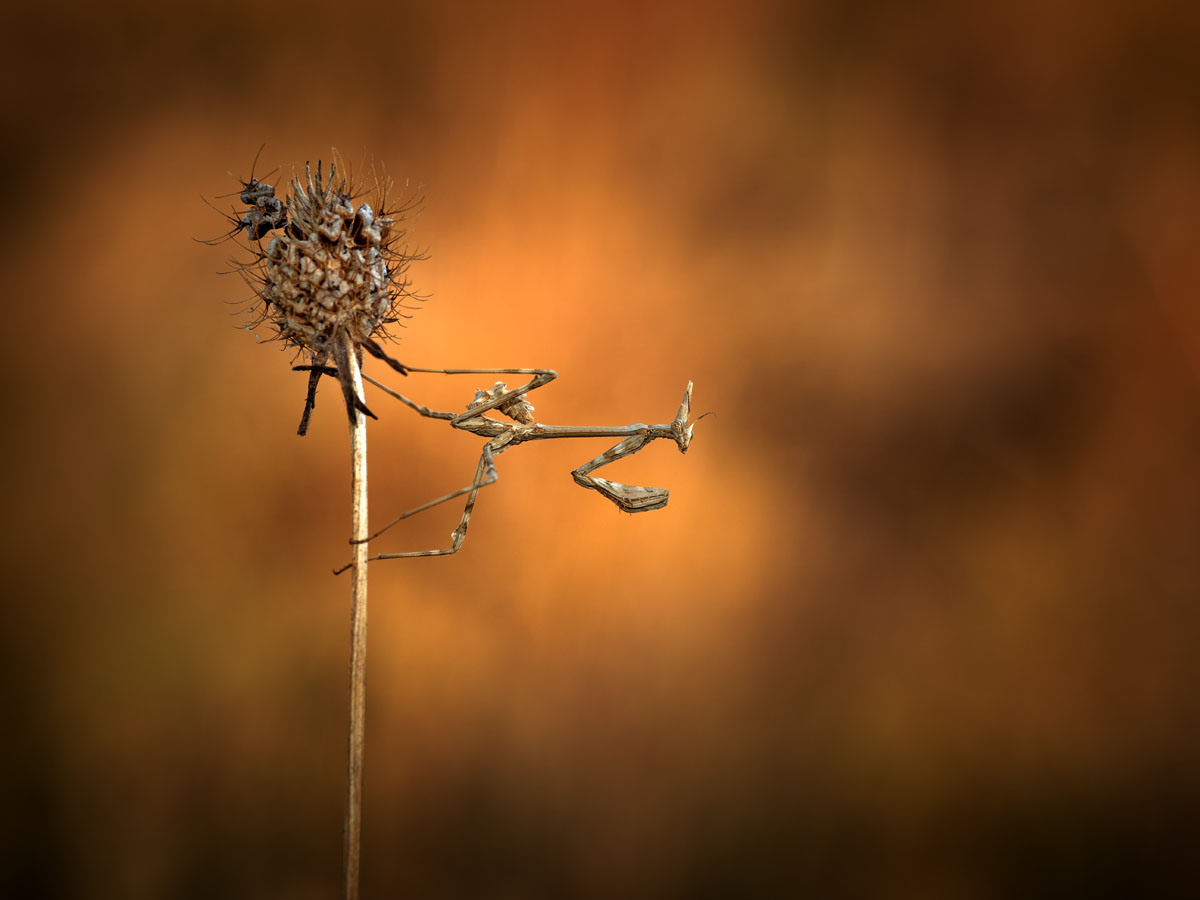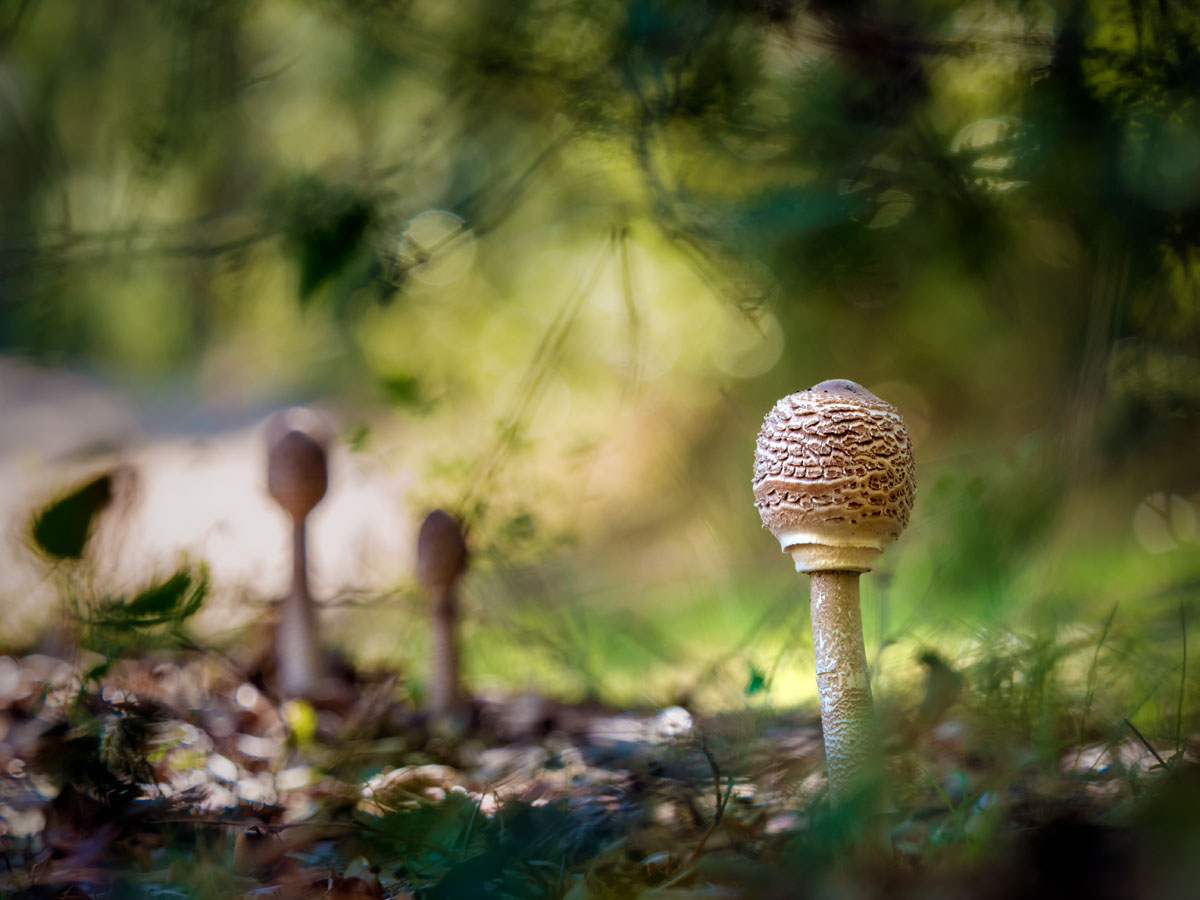Small natural wonders with the Olympus cameras
Macro-photography of animals and plants is for me a way of loving nature. I love to discover the infinite details that are hidden and share them according to my way of looking. I try to photograph with absolute respect for what I find and its environment, I do not touch or add anything to the scene and I only use tools such as the composition, the point of view or the parameters of the camera to show what motivates me.
I do not use artificial backgrounds, added lights or mistreat animals to do what I want. I just walk with my Olympus and photograph what I’m finding. It’s a very nice feeling to come back home with a good picture and know that the models continue their normal life as if nothing had happened!
I’ve taken pictures since I was a kid, my earliest memories include a metal box of cookies where we were putting the black and white copies of the photos we made at home. When we were out hiking I always asked the family camera to take pictures, I think it was a little heavy on that. As a reward after completing primary education my parents gave me a simple fixed lens camera that I still have. When I started working at age 16, I saved money to buy my first second-hand SLR at the same time as I started to study photography at the end of my workday.
The first camera I played while still a baby should have been the camera my parents had. I remember it black and plastic, should be something like the Kodak Brownie although I’m not sure. The one I was given at the end of school was a Werlisa, I could consider it my first real camera and with which I began to develop the negatives and copies. The first SLR was a fully manual Mamiya MSX 500 that looked like it had been in several wars although I thought it was a great device.
In the year 2012 I used simultaneously Olympus DSLR cameras and from other brands, but I received a kind invitation from Olympus to use an E-M5 and little by little the DSLRs were left in a drawer. I think it was about a year, in 2013, when I got rid of all the DSLR I had and I started using only Olympus OMD cameras for all kinds of jobs. Today I do not regret that decision at all and my back is very grateful 🙂
Currently, in my walks around the city I always carry a small shoulder bag with a Pen-F, a 17mm F1.8 and a 45mm. When it comes to reportage or an assignment I prefer the E-M1 MKII and the 12-40 Pro and 40-150 Pro lenses in addition to the Fl 600R flash. As a second body I use the E-M5 MKII a lot. For special occasions I also use the 7-14mm, the fisheye or the 300mm Pro, all of them guarantee an extraordinary quality and a different point of view for my works.
For nature macro photography the basic equipment I use is the E-M1 MKII, the MZuiko 60 macro and the Olympus Fl-14 flash. When it comes to photographing butterflies or flying animals I use the 40-150 Pro lens plus the 1.4X duplicator, so I do not have to get so close to the animal and avoid to scare him.
I always take the images in RAW format plus SF quality Jpeg, with Adobe sRGB color profile. I preview and save the images in the iMac through Adobe Bridge, creating folders whose name includes the date, the camera I used and the general reason for the photos. As storage I use two WD external hard drives configured to store the same information in both. So, if one of them stops working I have the other as security. Periodically I save all the files of these hard disks to a third unit that I keep in a family member’s house for the fear that in my house there could be a fire, robbery, etc.
To process the images I use Adobe Photoshop, previously passing through Adobe Camera Raw. I do not usually take too long to process the photos, two or three minutes at most, since I only adjust the tonality, I give a little color intensity and most occasions darken the corners to highlight the animal or plant. I do not work with layers, if I have to do some adjustment of luminosity of some zone I do with the Lasso tool creating a mask and blurring the edge of the selection with the Gaussian filter so that the transition zone is smooth and goes unnoticed. The final file is saved in 16-bit Tiff format, they usually weigh just over 100 Mb each but it’s worth it because it has a lot of quality.
Thanks to the lightness of the Olympus equipment, I like to take the photographs handheld, practically never use tripod. This has the advantage of speed, on a morning of nature walk I can return with a good handful of acceptable images. I use the fill flash quite a bit in broad daylight, for this I put the S exposure mode, very low ISO, and the shutter speed of 1/250 sec, the highest flash sync speed. For scenes in the shadow I don’t use flash and I usually work in A mode with F2.8 diaphragm watching that the speed is high enough, otherwise I raise the sensitivity until I get it.
For me the composition is very important, I usually look for a point of view that shows clean backgrounds without leaves or branches that distract attention, or sometimes I look for a window between the vegetation through which I have direct vision of the animal and I play with the out of focus of the elements between camera and subject.
I like to experiment to look for new aesthetics within the macro photography of nature, but always within the maximum respect for living beings. To do this I try backlighting, low angle points of view, sometimes I use a fisheye, etc. There is much to investigate, much to show.
As a conclusion and evaluating my equipment as a whole system, on the positive side I would highlight the extraordinary quality of the lenses, with a performance and image quality that will support the appearance of new generations of sensors with higher megapixel count and continue to give a high quality. The image stabilization is simply magical, unbelievable, far above the the rest of the camera brands. The sensor cleaning works perfectly and saves me a lot of editing work with the clone tool!
The electronic viewfinder I like very much, to be able to see the modifications that we want to introduce in the luminosity of the image before making the photo is something impossible with DSLRs, in addition to being able to introduce the sun in the frame, for example.
Another point I especially like is the excellent ergonomics that allow me to configure the camera to change parameters very quickly without removing the eye from the viewfinder. As for negative points, I think the menus start to have too many options, sometimes I miss the film cameras and having only M Mode.
Personally I think it’s wise the miniaturization of the equipment. I would like it to be a priority even in the range of Pro cameras and lenses.
Support us by shopping at Amazon. Thanks.
[easyazon_link identifier=”B01AW10GM8″ locale=”US” tag=”mhmedia07-20″]Olympus Pen-F[/easyazon_link]
[easyazon_link identifier=”B01M4MB3DK” locale=”US” tag=”mhmedia07-20″]Olympus E-M1 MK II[/easyazon_link]
[easyazon_link identifier=”B00S6DBM2S” locale=”US” tag=”mhmedia07-20″]Olympus E-M5 MK II[/easyazon_link]
[easyazon_link identifier=”B00WENHU6S” locale=”US” tag=”mhmedia07-20″]Olympus 7-14mmF2.8 Pro[/easyazon_link]
[easyazon_link identifier=”B00EY3YGBS” locale=”US” tag=”mhmedia07-20″]Olympus 12-40mmF2.8 Pro[/easyazon_link]
[easyazon_link identifier=”B00NGSLSK4″ locale=”US” tag=”mhmedia07-20″]Olympus 40-150mmF2.8 Pro[/easyazon_link]
[easyazon_link identifier=”B00CI3R4VU” locale=”US” tag=”mhmedia07-20″]Olympus M.17mmF1.8[/easyazon_link]
[easyazon_link identifier=”B00CI3R53W” locale=”US” tag=”mhmedia07-20″]Olympus M.45mmF1.8[/easyazon_link]
[easyazon_link identifier=”B01950SVHY” locale=”US” tag=”mhmedia07-20″]Olympus M.300mmF4.0 Pro[/easyazon_link]
JOIN OUR FACEBOOK GROUP

Martin Gallego was born in Badalona (Spain) in 1961. He is an Olympus Visionary practically since the appearance of the OMD camera series. Specialized in nature macro photography, street and reportage, he defines himself as an all-terrain photographer. He has published three books, written a multitude of articles for magazines, of photographic techniques and reviews of cameras and lenses, both in paper and the web. Has done several individual and collective exhibitions and usually imparts courses and workshops of varied topics.





















Jan Steinman
May 24, 2017 @ 04:23
Wow. Just wow. Thank you, Martin!
Martin Gallego
May 24, 2017 @ 08:20
Thanks Jan!
Marco Brunetti
May 24, 2017 @ 08:50
Love your picture !
Simon Miles
June 21, 2017 @ 14:44
Stunning work. Thanks for sharing.